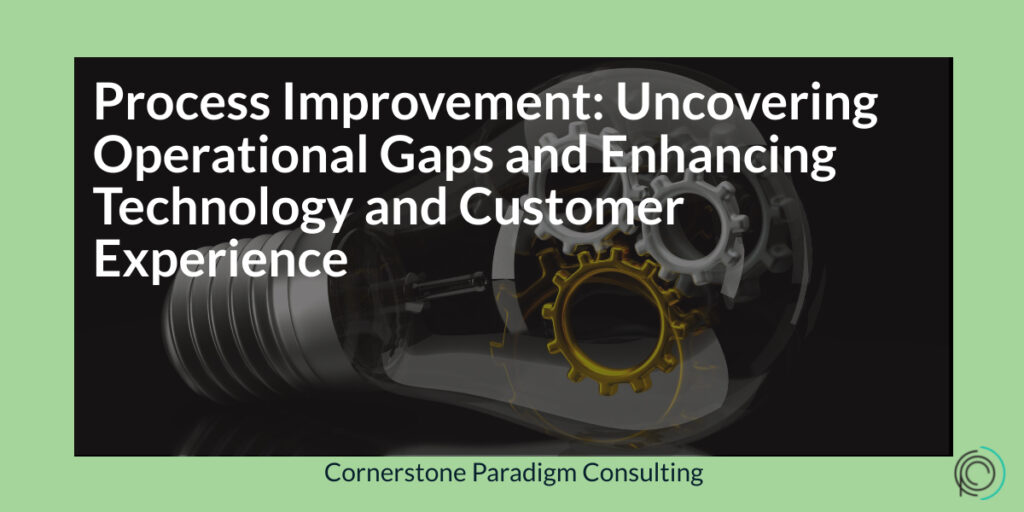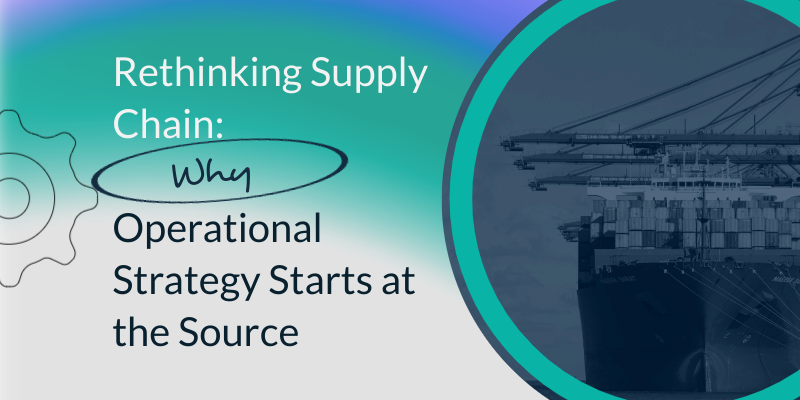Unlocking Potential: Harnessing Process Improvement to Drive Efficiency and Competitive Edge
For any business aiming to stay ahead in a fast-paced and evolving marketplace, adopting process improvement methodologies is critical. These techniques are invaluable in identifying operational inefficiencies, pinpointing areas where technology falls short, and uncovering flaws in customer experience. Achieving this requires a thorough collection and in-depth analysis of data from a wide range of stakeholders throughout the organization. By engaging in this comprehensive evaluation, businesses can gain a clear understanding of their current operational landscape, which is the first step in implementing effective solutions. In this detailed blog post, we will explore the various facets of process improvement and demonstrate how it can significantly enhance the performance and competitiveness of your business operations.
Process improvement is an ongoing process that involves constant evaluation and refinement of existing procedures to achieve greater efficiency, productivity, and quality. It is a continuous cycle of identifying areas for improvement, implementing changes, and monitoring the results to ensure sustained progress.
One of the key components of process improvement is the use of data-driven analysis. Utilizing relevant data provides valuable insights into the current state of operations and allows for informed decision-making. This approach also helps to identify patterns and trends, enabling businesses to proactively address potential issues before they become major problems.
Another crucial aspect of process improvement is the involvement of all stakeholders across different departments and levels within the organization. By encouraging collaboration and gathering diverse perspectives, businesses can gain a holistic view of their processes and identify areas for improvement that may have been overlooked.
Additionally, process improvement methodologies also involve the use of tools and techniques such as process mapping, root cause analysis, and Lean Six Sigma. These tools aid in identifying inefficiencies, bottlenecks, and waste within processes, allowing businesses to streamline operations and eliminate unnecessary steps or activities.
It is essential to note that the benefits of implementing process improvement methodologies go beyond just improving operational efficiency. In today’s customer-centric marketplace, processes that are streamlined and optimized also result in improved customer experiences. This can lead to increased customer satisfaction, loyalty, and ultimately, a competitive advantage for the business.
In conclusion, process improvement is an essential aspect of any successful business strategy. By continuously evaluating and refining processes using data-driven analysis, involving all stakeholders, and utilizing effective tools and techniques, businesses can achieve greater efficiency, productivity, and quality in their operations. It is a continuous journey that requires commitment and dedication but can yield significant long-term benefits for any organization. So don’t wait any longer – start your process improvement journey today!
Process Improvement Benefits
Process improvement is a critical strategy that organizations utilize to pinpoint and address the weaknesses hindering their success. This approach encompasses a thorough evaluation of current processes to identify areas where they are lacking in efficiency or effectiveness. It’s not just about streamlining operations; it’s also about identifying potential technological advancements that can significantly enhance performance metrics. By implementing process improvement methodologies, businesses can experience a range of benefits, including:
- Cost Savings: Process improvement helps to identify and eliminate waste, unnecessary steps, or activities that are not adding value. This results in cost savings for the organization, which can be redirected towards other business initiatives.
- Increased Productivity: Streamlining processes and eliminating inefficiencies allows employees to work more efficiently, resulting in increased productivity levels. This also leads to reduced workload and stress for employees, leading to better job satisfaction.
- Improved Quality: By identifying and addressing flaws within processes, businesses can ensure that their products or services meet the highest quality standards. This helps to build a positive reputation and increases customer satisfaction.
- Enhanced Customer Experience: As mentioned earlier, process improvement also has a direct impact on the customer experience. By optimizing processes and reducing wait times or errors, businesses can provide a smoother and more enjoyable experience for their customers.
- Competitive Advantage: In today’s fast-paced market, organizations must continuously strive to improve. Implementing process improvement methodologies gives businesses a competitive edge by differentiating them from competitors through increased efficiency, higher quality, and improved customer experiences.
Process improvement plays a crucial role in enabling businesses to gain a deeper understanding of their customer’s needs and experiences. Through the meticulous analysis of customer feedback and interactions, companies are able to decode the specific desires and expectations of their customers regarding their products or services. This detailed insight allows businesses not only to comprehend but also to anticipate the needs of their customers better.
By rigorously examining every piece of feedback and every interaction, businesses can identify patterns and trends that might not be immediately evident. This analytical approach helps in pinpointing exactly what features or aspects of their offerings are most valued by customers, as well as areas that may require enhancement or rethinking.
Armed with this valuable information, businesses are then in a strong position to make informed adjustments to their products or services. These adjustments are aimed at aligning more closely with customer expectations, which is a critical factor in today’s competitive market. By doing so, companies can significantly elevate their levels of customer satisfaction. Improved customer satisfaction leads to increased loyalty and can have a positive impact on the company’s reputation and overall success.
The systematic process of improvement, grounded in a deep understanding of customer feedback and interactions, is indispensable for businesses seeking to refine their offerings and achieve a higher degree of customer satisfaction. This not only helps in retaining existing customers but also in attracting new ones, thereby ensuring sustained business growth.
Expanding further on customer insights, by refining their processes with a customer-centric approach, businesses are not just optimizing their customer experience (CX); they are also laying the groundwork for improved customer success. Streamlining processes to be more customer-focused can lead to more personalized and efficient service delivery, which not only meets but exceeds customer expectations. This focus on enhancing the customer journey directly contributes to building stronger relationships with customers, fostering loyalty, and encouraging repeat business.
The benefits of process improvement extend far beyond mere operational enhancements. They play a pivotal role in transforming the way businesses understand and cater to their customers, ultimately leading to sustained growth and success in today’s competitive market.
Application of Process Improvement Techniques
One effective way that businesses can leverage process improvement is by meticulously analyzing data gathered from stakeholders across various levels of the organization. This crucial step involves an in-depth collection of employee feedback regarding their daily interaction with current processes or systems in place. Employees, being on the front lines, offer invaluable insights into the efficiency and effectiveness of current methodologies. Additionally, surveying customers on their experiences with the company’s products or services provides an external perspective on what is working well and what areas require enhancements. Beyond qualitative feedback, employing analytics tools to systematically measure and track the performance of various processes over time can uncover quantitative data that might not be immediately apparent through feedback alone.
Once the data has been meticulously collected, the next critical step is to analyze it for patterns or trends that could signify underlying weaknesses in operations or pinpoint potential areas for operational improvement. This analysis might reveal, for example, bottlenecks that slow down product delivery or areas where customer satisfaction could be enhanced.
Armed with this comprehensive understanding, businesses are in a strong position to develop well-informed plans aimed at refining processes. These plans can be based on a combination of direct customer and stakeholder feedback as well as the insights gained from data-driven analysis. The objective is not only to address current inefficiencies but also to establish a framework for continuous improvement that can adapt to future changes and challenges. By taking a holistic approach to process improvement, organizations can achieve more streamlined operations, enhanced customer satisfaction, and ultimately, a more competitive position in the market.
If you’ve already experimented with this method and find yourself in need of a deeper, more detailed level of information, I strongly encourage you to craft a process map detailing your current operational state. This map isn’t just a tool; it’s a comprehensive visualization that should accurately reflect the real-time, actual processes your organization employs. It’s crucial, however, that you resist the temptation to fill in this map by yourself. Instead, empower the various teams within your organization to contribute, allowing them to outline their own processes accurately. This inclusive approach not only ensures the map’s accuracy but also fosters a sense of ownership and accountability among team members.
Adopting a systematic approach to process improvement is essential. By leveraging both qualitative insights and quantitative data, businesses can navigate the complex landscape of operational enhancement with confidence. This balanced perspective ensures that decisions regarding process adjustments are well-informed and strategically sound, ultimately leading to superior performance outcomes and a more streamlined, efficient operation overall.
Process improvement serves as a critical instrument for business leaders aiming to pinpoint operational deficiencies, technological shortcomings, and customer satisfaction issues adversely affecting their company’s competitive edge in today’s dynamic market. By meticulously gathering data from various stakeholders throughout the organization and employing a blend of qualitative and quantitative analytical techniques, companies can gain the deep insights needed to craft strategic plans aimed at enhancing operational processes. This, in turn, paves the way for achieving sustained success and superior performance in the long run.
Implementing process improvement strategies enables business leaders to systematically evaluate and refine their company’s workflow, ensuring resources are optimally utilized and customer expectations are consistently met or exceeded. It’s about making smarter, data-driven decisions that foster innovation, enhance efficiency, and improve overall service delivery.
With the arsenal of process improvement methodologies at their disposal, including Lean, Six Sigma, and Total Quality Management, business leaders are better equipped to identify bottlenecks, eliminate wasteful practices, and introduce streamlined processes that boost productivity and profitability.
For those interested in delving deeper into how process improvement can revolutionize your business operations and drive growth, we invite you to visit our contact us page. Book a consultation with one of our seasoned experts today and embark on the journey to operational excellence and market leadership.







